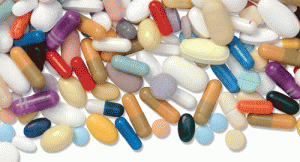FDA Warning: Don’t Use Tramadol in Children
Tramadol is not FDA approved for treating pain in patients age 17 years and younger.¹ The FDA is investigating the off-label use of tramadol in this patient population because of the rare and serious risks of slowed or difficulty breathing. Tramadol is hepatically converted to the active opioid, O-desmethyltramadol. Fast metabolizers convert the drug more rapidly and completely, leading to higher concentrations of the drug in the blood. This can lead to potentially fatal respiratory side effects.
Healthcare professionals need to be aware of these potentially serious outcomes of this agent in younger patients. Alternative analgesics should be sought.
Phase 2 Studies on ABT-494
The investigational, oral JAK-1 inhibitor, ABT-494, was shown to be effective for refractory moderate to severe rheumatoid arthritis (RA) in two Phase 2 studies.²
In the BALANCE-1 study, patients with an inadequate response to at least one anti-tumor necrosis factor-alpha (anti-TNF-alpha) agent received one of four ABT-494 doses for 12 weeks and were evaluated for an ACR20 response. ACR20 responses were achieved in 56% of patients who received 3 mg twice daily (P<0.05), 63% of those who received 6 mg twice daily (P<0.01), 73% of those who received 12 mg twice daily (P<0.001) and 71% of those who received 18 mg twice daily (P<0.001). Of placebo-treated patients, 35% achieved an ACR20 response. ACR50 and ACR70 responses were achieved in more active-treated patients compared with placebo-treated patients.
In the BALANCE-2 study, patients with an inadequate response to methotrexate received one of four ABT-494 doses for 12 weeks and were evaluated for an ACR20 response. ACR20 responses were achieved in 65% of patients who received 3 mg twice daily, 73% of patients who received 6 mg twice daily (P<0.05), 82% of patients who received 12 mg twice daily (P<0.01), 77% of patients who received 18 mg twice daily (P<0.01) and 82% of patients who received 24 mg once daily (P<0.01). Of placebo-treated patients, 50% achieved an ACR20 response. Similar to BALANCE-1, ACR50 and ACR70 responses were achieved in more active-treated patients compared with placebo-treated patients. In BALANCE-2, 30% of patients failed at least two anti-TNF-alpha agents. The most common side effect was headache.
ABT-494 is also in Phase 2 clinical trials for treating Crohn’s disease.
Michele B. Kaufman, PharmD, CGP, RPh, is a freelance medical writer based in New York City and a pharmacist at New York Presbyterian Lower Manhattan Hospital.



